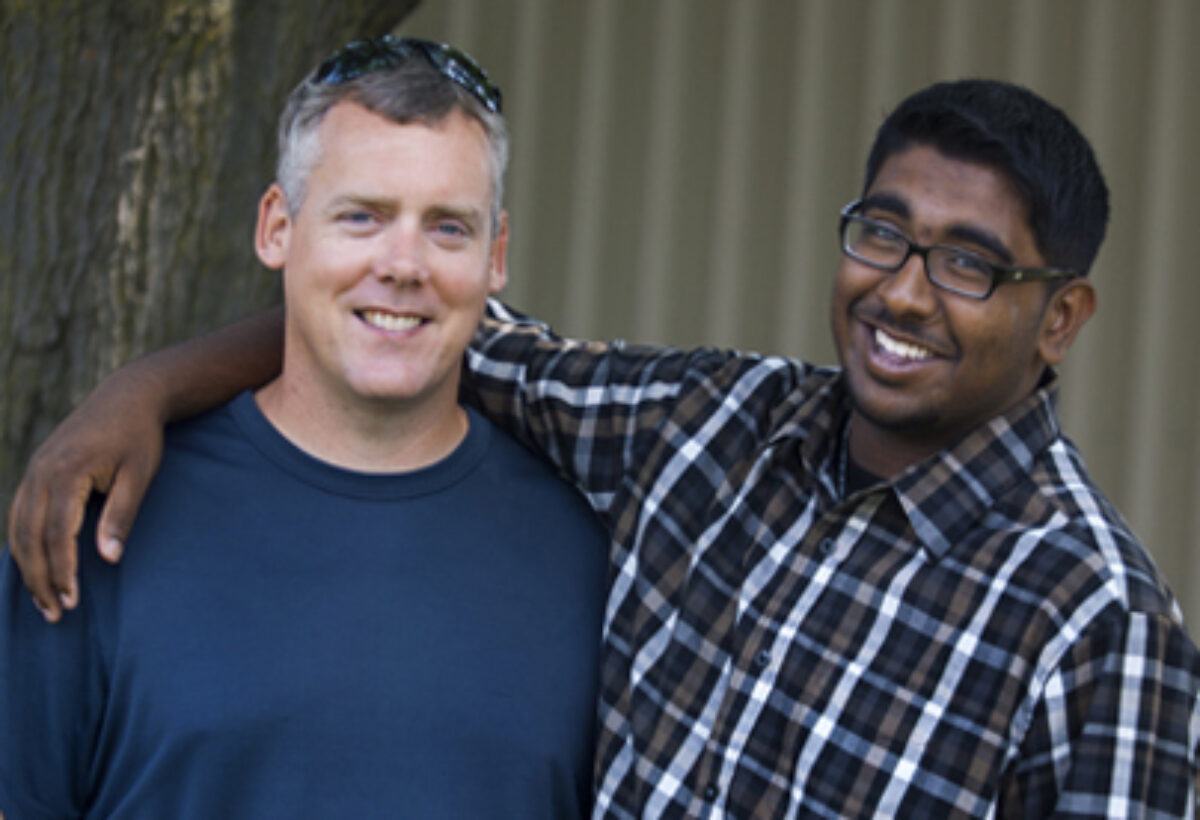Toronto teacher saves student’s life with AED

It was Friday the 13th during his first class of the day when physical education teacher Jeff saw Ajethan collapse while playing soccer in the gym.
“One of my students said to me that something was wrong,” Jeff recalls. “I went over to him, he was gasping for air, his eyes were rolled back in his head.”
He immediately sprung into action—he called the main office and told them to call 911, then told another teacher to get the defibrillator. Meanwhile, Jeff encouraged Ajethan to breathe.
When the defibrillator arrived, Jeff lifted the student’s shirt and applied the pads. The machine assessed that Ajethan was in cardiac arrest and advised a shock—Jeff pressed the button and once the shock was delivered, another teacher started doing compressions. By the second compression, Ajethan was breathing again.
Shortly thereafter, the ambulance arrived and took Ajethan to hospital. There, the doctors determined that he had experienced ventricular fibrillation. “It’s when the bottom of the heart was basically twitching instead of actually beating,” explains Ajethan. “The doctors told me I had hypertrophic cardiomyopathy, and my heart muscles at the bottom were too enlarged, too big for my actual heart so it didn’t beat properly.”
You do what you learn. The AED is great because it's like having a doctor beside you and they talk you through it. Having it talk to you is comforting to know you are doing it right.
Ajethan underwent surgery to implant a pacemaker/implantable cardioverter-defibrillator combination. He has since returned to school and is heading to university in the fall to study biotechnology.
The active student has endless thanks for what Jeff did for him that day. “He is one of my favourite teachers to begin with,” Ajethan describes. “Now he’s even beyond that—I love him, he’s such an awesome guy.”
Jeff, for his part, is thankful there was an AED nearby that day. “The doctor said it very clearly,” Jeff says. “The initial shock was immediate and was what saved his life. The only reason I was able to do it was because I had the defibrillator right there.”
As a physical education teacher, Jeff teaches the ACT High School CPR & Defibrillator Program, teaching students how to react in these very situations. That training, he says, is incredibly beneficial. “It gives you the awareness and confidence that helps you overcome fear…and to act,” he says.
“You do what you learn. The AED is great because it’s like having a doctor beside you and they talk you through it. Having it talk to you is comforting to know you are doing it right.”
Ajethan too sees the value of the training. “Think about what people could do if they learned CPR and how to use the AED—they could save someone’s life, they could be a hero,” he says. “And just that feeling of accomplishing something that important, and as a kid you’re still young so then you realize that your life is that much more meaningful.”
The ACT High School CPR Program was set up in Jeff and Ajethan’s high school in 2000, thanks to generous community and provincial-level support that enabled the donation of mannequins, teacher training and curriculum resources. The lead community partner in Toronto is the Kiwanis Club of Toronto. Provincial partners of the program are the Government of Ontario, Hydro One and The Ontario Trillium Foundation. The AED training portion was added in June 2008.
The Advanced Coronary Treatment (ACT) Foundation is an award-winning, national charitable organization dedicated to establishing CPR and AED training in high schools across Canada. ACT raises funds to donate mannequins and teacher training to schools, and guides schools in program set-up and long-term sustainability. Over 1.8 million youth have been trained in CPR by their teachers through this lifesaving program to date.
ACT’s national health partners supporting the program in Ontario and throughout Canada are: AstraZeneca Canada, Pfizer Canada and Sanofi. They provide ACT’s sustaining funding and are committed to the Foundation’s national goal of promoting health and empowering Canadians to save lives.
